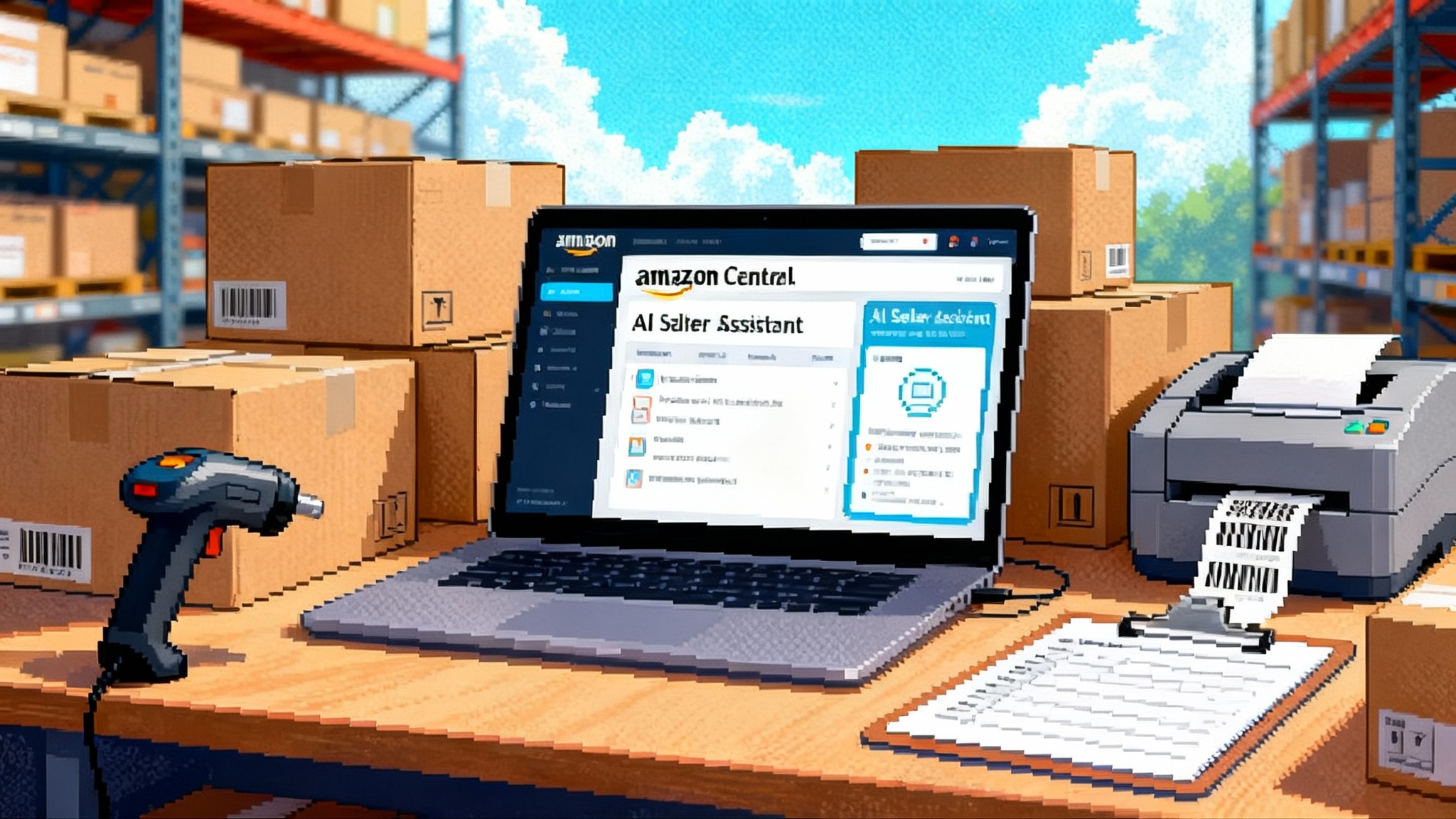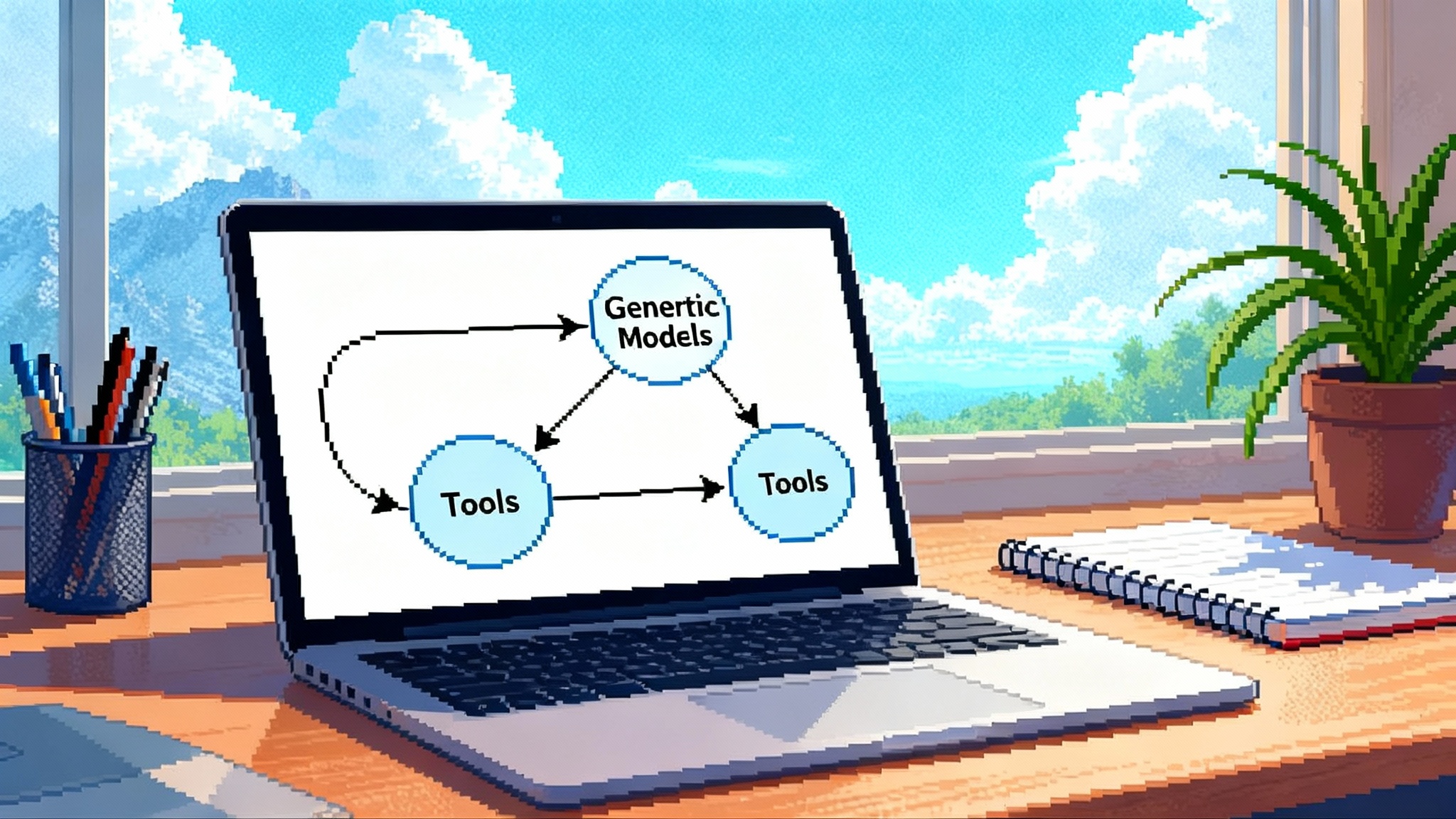Amazon’s agentic Seller Assistant transforms SMB e-commerce
Amazon is evolving Seller Assistant into a permissioned agent that plans, executes, and reports across inventory, account health, compliance, and ads. See what changed on September 17, 2025 and why it matters for SMBs.

What changed on September 17, 2025
On September 17, 2025, Amazon unveiled the next phase of Seller Assistant for U.S. sellers. The product has moved from a friendly Q&A helper to a permissioned, action-taking agent that proactively proposes plans, asks for consent, and completes tasks. In demos and documentation, Amazon highlights how the assistant now operates across inventory, account health, compliance, and advertising. For an official overview of the capabilities and examples, see Amazon’s own Seller Assistant upgrade overview.
That shift matters because answers do not scale, but actions can. A Q&A bot saves minutes. A well scoped agent saves days by orchestrating steps while you sleep. For small and midsize sellers who juggle listings, shipments, policy checks, support messages, and ad optimization, the difference is material. It is the gap between firefighting and compounding.
From chat helper to action taker
The original Seller Assistant worked like a knowledgeable colleague who always had the manual open. You asked how to fix a suppressed listing or what a policy meant, and it pointed to the right steps.
The new model behaves like a junior operations manager. It still explains, but it also drafts a plan, asks for approval when needed, and then executes. Instead of merely warning that your top ASIN is running low, it can propose a replenishment plan, create a purchase order template, and schedule a restock reminder. Instead of listing ad best practices, it can generate ad copy, assemble creatives from your catalog, and queue a draft campaign for review.
This is the essence of agentic AI. The system perceives the state of your business, sets goals aligned with your permissions, uses tools to act, and reports back with traceable steps. You remain in control, but you are no longer the click engine.
What the agent can do today
Capabilities will vary by account configuration and permission scopes, but the patterns are consistent.
-
Inventory optimization
- Monitor sell through, lead times, and seasonality to flag likely stockouts early.
- Draft restock plans with quantities by fulfillment center, accounting for inbound limits and handling times.
- Suggest listing improvements that lift conversion, such as title clarity, bullet order, and image coverage.
-
Account health monitoring
- Track policy warnings, performance targets, and defect rates.
- Triage the riskiest issues and draft responses or appeals.
- Alert you to negative trends well before they trigger enforcement.
-
Compliance navigation
- Interpret changing regulations and marketplace rules by category and region.
- Prepare checklists, collect required documents, and pre fill forms where allowed.
- Schedule follow ups when certificates expire and keep a paper trail.
-
Advertising and creative generation
- Produce headlines and variations aligned to ad guidelines.
- Assemble image concepts from your catalog and call out missing shots.
- Create draft Sponsored Products and Sponsored Brands campaigns for approval.
Each task used to consume a carved out afternoon. Now the agent can run on a schedule, raise only what needs a human decision, and deliver a ready to sign draft.
A new, permissioned workflow for sellers
Think about your daily operations as a loop that the agent can help you formalize.
- Define intent. Example: keep the top 20 SKUs in stock at 30 days cover, minimize long term storage fees, and protect account health.
- Let the agent draft a plan. It checks forecasts, inbound limits, and storage thresholds. It outlines a small set of actions that would meet your goals.
- Grant permissions. Some steps can be auto approved. Others require explicit consent each time, or only within a spend or risk limit.
- Execute and document. The agent performs steps through internal tools and APIs, then logs what changed and why.
- Review outcomes. If the results are consistently good, promote that class of tasks to auto approval. If not, adjust or roll back.
Over time, your permission model becomes a practical operating system. You set policy. The agent does the work.
Why this matters for SMB e commerce
- Time arbitrage. Small businesses win when they convert founder time into repeatable processes. A permissioned agent is a process you do not have to run every day.
- Quality lift. Agents that learn from outcomes improve with every cycle. The system proposes better plans across similar contexts while staying inside your guardrails.
- Lower cognitive load. Marketplace operations involve hundreds of micro rules. With an agent surfacing only the decisions that matter, your attention shifts from hunting issues to setting boundaries and approving deltas.
- New seller onramps. Many entrepreneurs avoid marketplaces because the first 90 days feel fragile. A competent agent that handles sharp edges lowers the barrier to entry.
- Competitive parity. Large brands already run playbooks with analysts and tools. An agent narrows the gap by giving small teams a virtual operations analyst that can act.
Under the hood: how a permissioned agent stays safe
Amazon has not published every technical detail, but the design aligns to proven building blocks used across modern agent stacks.
- Retrieval over trusted data. The agent grounds its reasoning in your catalog, performance history, and policy documentation, reducing hallucinations and improving action accuracy.
- Tool use with constraints. Internal tools and APIs are wrapped in permission scopes, so the agent cannot overreach.
- Plans before actions. Before acting, the agent produces a natural language plan. You can approve, adjust limits, or decline.
- Structured memory. The system remembers decisions, preferred ranges, and past exceptions, so it stops asking the same question twice.
- Continuous evaluation. Every action is scored against policy and outcomes. Failures become learning signals and safety tests.
Amazon has invested heavily in foundation models and orchestration within AWS. A key piece is the policy and safety layer that keeps generated plans inside the lines. Amazon has been public about safety tooling for Bedrock, including filters, policy enforcement, and human approval for sensitive actions. For deeper context on these controls, review Guardrails for Amazon Bedrock.
Guardrails that keep actions containable
Agentic systems must balance speed with control. Expect mechanisms like the following:
- Opt in and scoping. The agent cannot act until you enable it, and you define scopes such as which ASINs, which budgets, and which categories of actions are allowed.
- Human in the loop by default. High risk actions require one click approval. Thresholds can be set by spend, inventory impact, or account health risk.
- Transparent logs. Every step is recorded with who, what, when, and why. You can inspect the prompt, the plan, the tools called, and the resulting changes.
- Versioned drafts and rollbacks. The agent proposes drafts and saves versions so you can revert.
- Rate limits and circuit breakers. Action volumes are capped per hour, and the system halts automatically if error thresholds spike.
- Restricted data paths. Sensitive data stays within approved connectors.
- Policy checks before write. Category policies and compliance rules are evaluated before a change is attempted.
- Post action audits. Periodic reviews sample actions to ensure rules were followed and outcomes were acceptable.
These guardrails do not remove risk. They make errors containable, explainable, and reversible.
Concrete scenarios that show the shift
-
The disappearing stockout
Yesterday: You discover a stockout because sales flatlined. You export a CSV, calculate cover, and spend an hour deciding what to order and where to send it.
Today: The agent sees two top ASINs dipping below 14 days cover next week. It weighs restock limits against lead times, proposes a split inbound plan, drafts a supplier email, and schedules a reminder to reconcile when the shipment closes. You approve once, and the sequence runs. -
The policy scare that never escalated
Yesterday: A listing gets flagged. You dig through policy pages, find the proper contact path, and draft an appeal.
Today: The agent notices defect rate creep and a misclassification risk on a new variant. It flags the issue, prepares a category policy summary, drafts a corrected attribute set, and schedules a category contact with attachments. You review and approve in minutes. -
The ad creative that ships itself
Yesterday: You start from a blank page. You write headlines, pick images, and set bids.
Today: The agent selects three high intent keywords from your search term report, generates two headline and image sets that match ad guidelines, and assembles a draft Sponsored Brands campaign with budget caps you set last month. You approve, and the campaign goes live. The agent schedules a 72 hour check to pause underperformers.
Team impact and role changes
- Owners become policy makers. Your job shifts from doing tasks to defining desired state and risk boundaries.
- Generalists get leverage. A one person shop can run the checklist that used to require a small team.
- Specialists become editors. Copywriters and compliance leads spend more time reviewing drafts and less time starting from scratch.
- Hand offs get cleaner. The agent creates structured artifacts for each step, which makes onboarding vendors or new staff less painful.
Quick start playbook for sellers
You do not need to turn everything on at once. Start small, measure results, then expand.
- Map your constraints
- Define stock cover targets, inbound limits, and cash constraints.
- Set ad budgets, floors, and ceilings by campaign and brand.
- Write clear red lines: what the agent must never change without explicit approval.
- Pick two workflows to automate first
- Replenishment drafts for your top SKUs.
- Ad creative drafts for one flagship ASIN.
- Set approval thresholds
- Auto approve low risk steps such as draft generation and minor attribute fixes.
- Require manual approval for anything that impacts cash, account health, or legal exposure.
- Enforce the audit loop
- Review weekly action summaries.
- Keep an exceptions log for any action you veto so the agent learns your preferences.
- Scale to mid risk workflows
- Add compliance document reminders, image coverage checks, and budget adjustments with tight guardrails.
- Revisit permissions quarterly
- Expand auto approvals where the agent has earned trust.
- Tighten where you see drift.
How this foreshadows agent driven marketplaces
If Seller Assistant succeeds, it previews a marketplace where many routine operations are agent to agent.
- Listing quality negotiates itself. Your agent and Amazon’s listing quality agent agree on attribute fixes and image requirements, then present a one click approval.
- Supply chain becomes adaptive. Your agent recalculates inbound splits and routing based on real time capacity shared by a fulfillment agent.
- Ads find equilibrium faster. Your agent and the auction system exchange signals about performance and guardrails, reducing the need for daily bid babysitting.
- Compliance becomes proactive. Policy changes are codified once, and agents migrate affected listings to compliant states before a warning arrives.
These patterns echo broader shifts across the ecosystem. For example, Google’s retail APIs are evolving to let agents transact more directly, as discussed in our look at how AP2 unlocks commerce. Inside productivity suites, enterprise agents are moving from copilots to operators, a change we unpacked in Notion 3.0 agents playbook. Even the browser is becoming a runtime for action taking assistants, as explored when browser becomes the agent runtime. The through line is the same: permissioned autonomy with clear guardrails.
What to watch next
- Geographic expansion. The first rollout focuses on U.S. sellers. Watch how category and region expansion shapes permission models when local regulations differ.
- Deeper tool integrations. As the agent learns more tools, approval models and previews will matter even more. Expect richer templates for recurring approvals and better visibility into exact changes before you click OK.
- Shared learnings without shared data. The best systems improve globally without leaking seller data. Look for evidence that plans get better while each seller’s information remains isolated.
- Metrics that matter. Adoption should correlate with lower stockouts, fewer policy incidents, and faster campaign launches. When those deltas show up in dashboards, the value becomes obvious.
Bottom line
Amazon’s upgrade turns Seller Assistant into a practical agent that plans, acts, and explains. The value is not a single feature. It is the loop of proposing, approving, executing, and learning with clear controls. You still make the important calls. You still own the brand, the customer promise, and the risks. But now you can delegate routine, high volume work to a tireless operator that never forgets the checklist and documents every move.
If you are an SMB seller, the path forward is straightforward. Start with two low risk workflows, define tight permissions, review weekly, and only then expand. The winners will be teams that convert operator time into policies and let the agent run the playbook.
For the official announcement and examples, review Amazon’s Seller Assistant upgrade overview. For safety and policy context within AWS, see Guardrails for Amazon Bedrock.




